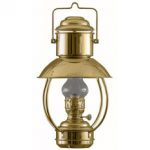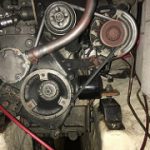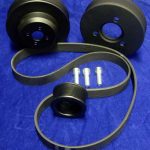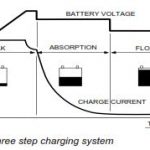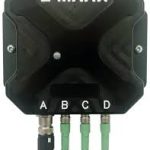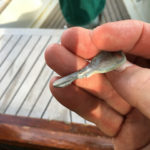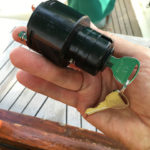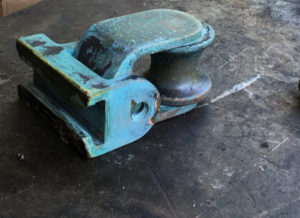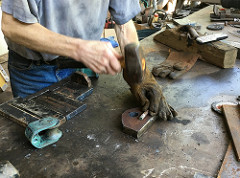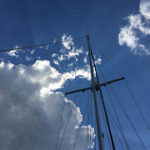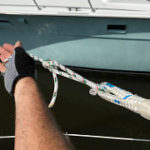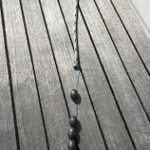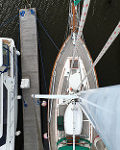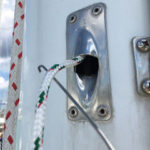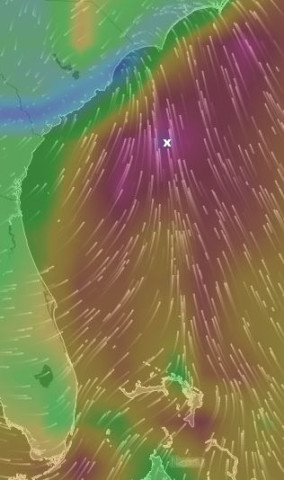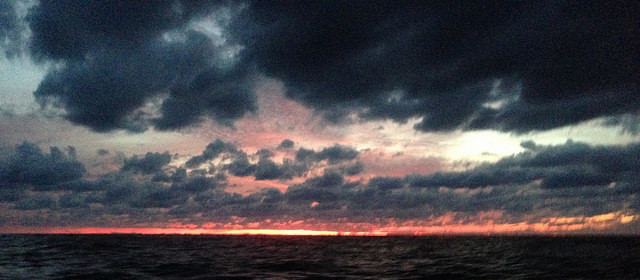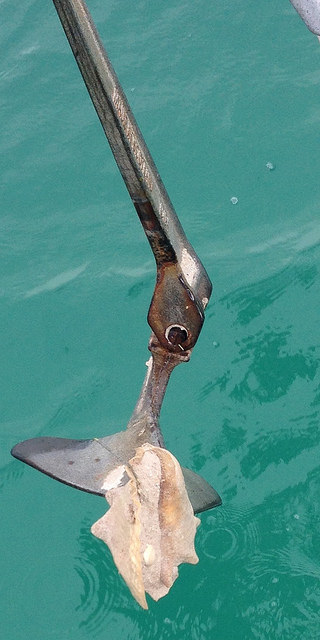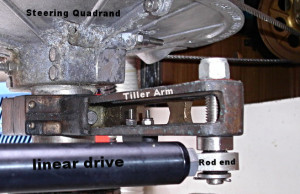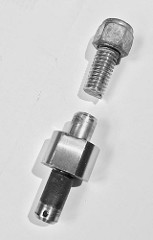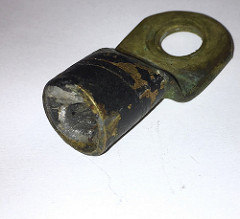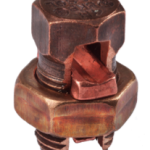The wind came from West by 21:00 hours but at 20-25 knots through the night and next day and night and all day after that. When I arrived on deck for my day watch I wasn’t mentally prepared for the temperature drop. I’d been enjoying 60-70 degree weather for the last several weeks which persisted well north along my route — until the wind had shifted.
Still driving North toward Carolina I was close hauled going to weather with triple reefed main and headsail furled to its reef mark. The wind now NW. These conditions result in wear and tear on the sheets and sails. Literally. I know I was pushing the boat hard.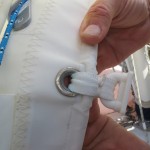 I was only 70 miles from home but I spied two of the mainsail slides (these are ~1″ length plastic cars that slide into the mast track allowing the sail to be raised or lowered) had perished. They had broken out and the portion of sail to which they were affixed allowed sail to billow wayward of the mast. I knew this was bad news. They work well in unison but on their own… One quits means extra strain on the next in line. I was still confident that the sail would see me through. By end of day, I had lost one more slide.
I was only 70 miles from home but I spied two of the mainsail slides (these are ~1″ length plastic cars that slide into the mast track allowing the sail to be raised or lowered) had perished. They had broken out and the portion of sail to which they were affixed allowed sail to billow wayward of the mast. I knew this was bad news. They work well in unison but on their own… One quits means extra strain on the next in line. I was still confident that the sail would see me through. By end of day, I had lost one more slide.
It was time to change course and tack sail (or motor) west. I was fairly close in now and it was necessary to maintain sea room. The shoals would soon be off to starboard. Not wanting to abuse the rig further I decided to Motorsail. I furled the headsail and then started the auxiliary. Starting my maneuver I pushed the throttle full on to bring her about. An engine alarm sounded followed by premature engine shutdown.
The signal reports low oil pressure or excessive coolant temperature. I investigated and found nothing amiss but each time I attempted a re-start the engine ran for brief seconds and then sputtered to a halt never achieving idle RPM. Disgusted and cloudy with fatigue I declared the machine broken and called it a day. Hove to I was in a safe place. My drift set was southward keeping me clear of land hazards.
I rested. Meanwhile… topside in the night the mainsail had had it. The remaining slides had popped and the main halyard had severed from forces for which it wasn’t intended. The mainsail still attached to the boom was blown over and floated in the drink. I gathered it in and secured it wet and useless to the boom with ties. At this point here are options:
- Divert to West to the ICW at Myrtle Beach sailing with headsail
- Divert SW to Charleston under headsail
- Drift South back down to the Bahamas 😉
Not enjoying the defeated feeling but with clear mind I decided to tackle the engine problem. Diesel engines are simple in that there is no ignition system to fail or troubleshoot. This leaves the fuel system. I switched to a different supply tank but this had no effect. The assumption was clogged filtration.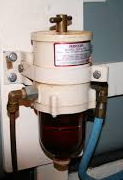 The remedy is to remove and replace filters and this is a terrible oily messy toxic stinky job if you know about diesel fuel. (Many people can’t handle it, especially on a platform that is rocking and rolling in a seaway) I pulled the lid off of the Primary (Racor 500FG) and extracted the used paper filter element. I noted that its container bay was only half full with fuel. That shouldn’t be. Hmmmm. I replaced the element with a fresh spare. Before resecuring I topped off the container level. For good measure I removed and replaced the secondary filter just to finish the job properly. Next step was to bleed the fuel line at the engine. This purges air that entered the system during the disassembly.
The remedy is to remove and replace filters and this is a terrible oily messy toxic stinky job if you know about diesel fuel. (Many people can’t handle it, especially on a platform that is rocking and rolling in a seaway) I pulled the lid off of the Primary (Racor 500FG) and extracted the used paper filter element. I noted that its container bay was only half full with fuel. That shouldn’t be. Hmmmm. I replaced the element with a fresh spare. Before resecuring I topped off the container level. For good measure I removed and replaced the secondary filter just to finish the job properly. Next step was to bleed the fuel line at the engine. This purges air that entered the system during the disassembly.
The moment of truth. Tweet outloud! The engine started and ran perfectly. Sorted.
Epilogue: Inspecting (while properly disposing of the used filters) once back ashore, I found no contamination debris. My thinking now is that the air cavity discovered in the filter housing was the actual problem. In the future I will periodically monitor for recurrence and adjust maintenance routine accordingly. Best tend to these things dockside.
The plastic sail slides? My Sailmaker has sourced stainless steel replacements.
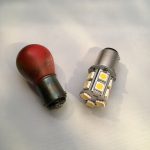 Observe that the boat has a dozen or more light bulb consumers. These are 12v single filament bayonet mount style which are relatively cheap and serve well but at they are hungry. The old school bulb on the left squanders 15 watts. The new solution pictured right is an LED using only 1.5 watts for an equivalent light output. There are even red LEDs (vision preserving for night ops) and .8 watts with reduced lumens.
Observe that the boat has a dozen or more light bulb consumers. These are 12v single filament bayonet mount style which are relatively cheap and serve well but at they are hungry. The old school bulb on the left squanders 15 watts. The new solution pictured right is an LED using only 1.5 watts for an equivalent light output. There are even red LEDs (vision preserving for night ops) and .8 watts with reduced lumens.